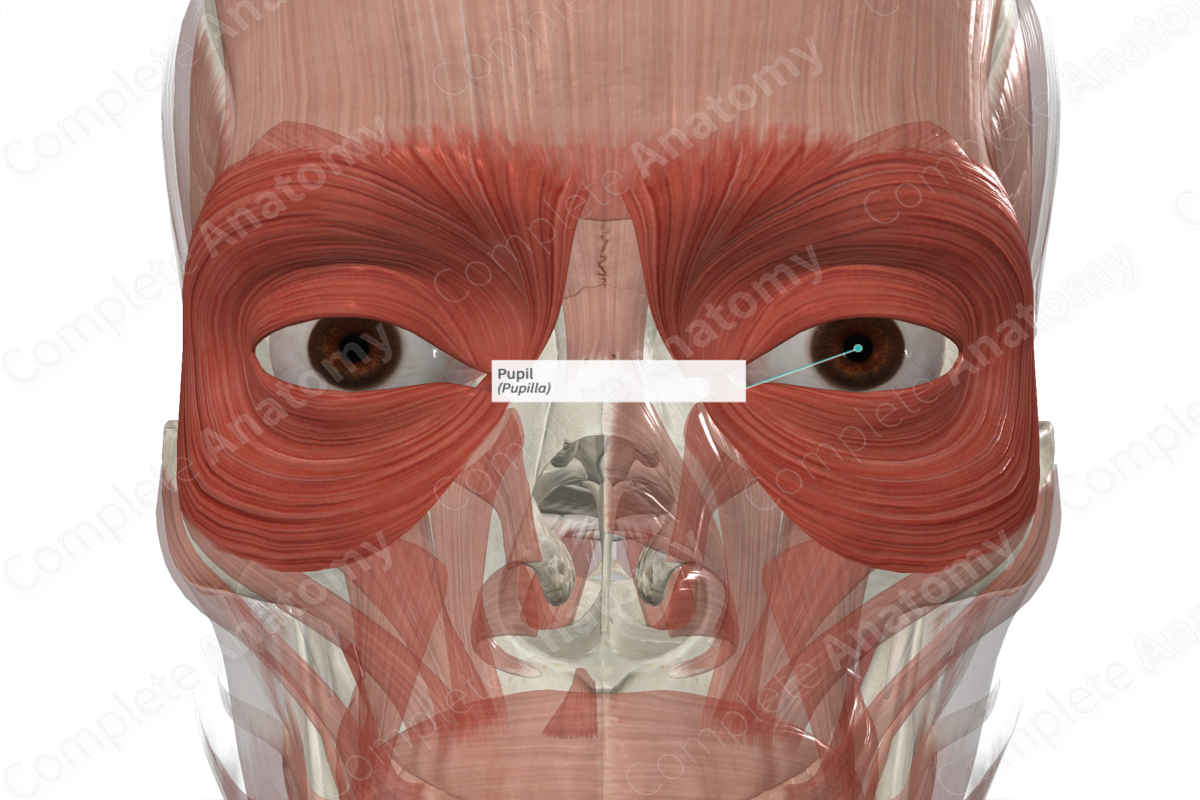
Structure
The pupil is the central aperture or opening of the iris of the eye. It allows light to enter the eyeball and hit the retina. Thus, the pupil appears black, since light entering the eyeball is absorbed by the retina. The diameter of the pupil varies continuously in order to regulate the amount of light entering the eye. This is known as the pupillary light reflex.
In humans, the pupil is round, however, in some species, such as cats and goats, the pupil has vertical or horizonal splits, respectively.
Key Features & Anatomical Relations
The pupil is located at the center of the iris, with the lens of the eye located directly behind it. The diameter of the pupil is regulated by the iris and is controlled by two involuntary muscles, the sphincter pupillae and dilator pupillae muscles. The sphincter pupillae, which is arranged circularly, decreases the diameter of the pupil i.e. constricts the pupil, while the dilator pupillae muscle, which is radially arranged, increases the diameter of the pupil.
Function
The pupil allows for the entry of light into the eye.
List of Clinical Correlates
- Mydriasis

